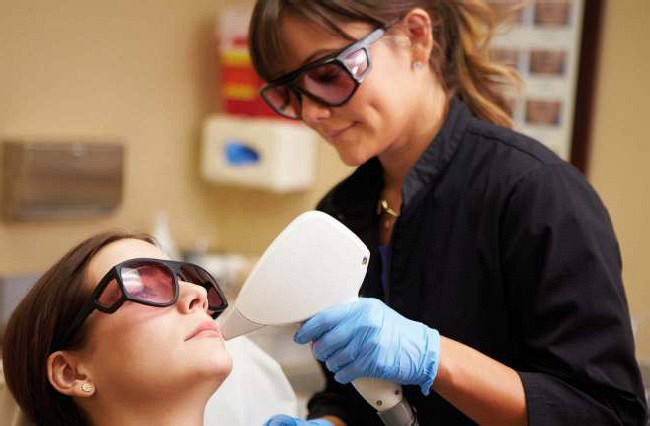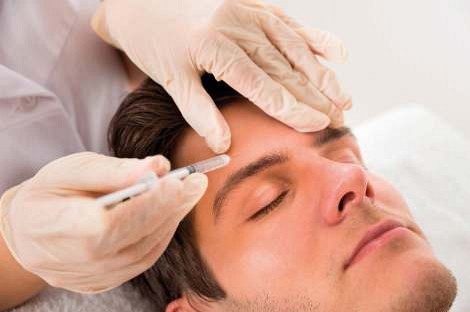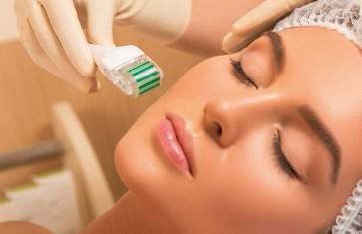Talking to…Caroline Larissey
The chairwoman of the newly formed JCCP sub-group for beauty tells Georgia Seago why she’s made it her mission to fight for therapists in aesthetics
Georgia Seago
Caroline Larissey has a big job on her hands. As quality and standards manager at the National Beauty Federation and National Hairdressers’ Federation (NBF and NHF) and chairwoman of the Beauty Aesthetic Special Interest Committee (BASIC), she is right in the middle of the aesthetics and beauty debate, ighting from all corners to make aesthetic qualiications accessible to beauty therapists.
Having started out in the industry as a hair stylist carrying out the odd beauty treatment, Larissey ultimately decided her skills would be better utilised behind the scenes: “I could see on the salon loor the frustrations that business owners had over education. Students were coming out of training and into salons where they need to be trained again, but salons struggle because they can’t always afford to do that,” she says. “I’ve always had this passion to make sure hair and beauty education is what it should be, that it has the rigour.”
Arguably, it’s now more than ever that the industry needs to demonstrate that rigour at every turn, in the face of critics from the medical community who believe beauty therapists have no business performing advanced aesthetic treatments such as botulinum toxin and iller injections under any circumstances. “I’ve always been very keen to make sure we have standards for botox and iller because that’s key to where we want to be,” says Larissey. “We need to have standards, qualiications and the right training groups to be able to do it, because the demand for those treatments has overtaken proper training and education routes.” Larissey has seen aesthetics iniltrate the traditional beauty space from the beginning, and was heavily involved in making sure the beauty voice was heard during her time at Habia (Hair and Beauty Industry Authority), where she was head of standards and qualiications. Habia was part of the Health Education England review into qualiications, launched in response to 2014’s Keogh Review into the safety of the aesthetics market following the PIP breast implant scandal. “From that we introduced Advanced Practices National Occupational Standards for a lot of the higher-level treatments,” says Larissey. “Right from the start we wanted to make sure we had those standards that could underpin a qualiication.”


Change of pace
Larissey speaks of past frustrations with the ever-changing education sector, like when she worked for four years on the 14–19 diplomas for hair and beauty, an initiative the Government at the time said “was going to radically change education”. “Things changed and the Government decided that wasn’t what it wanted. Then Habia was taken over by the Skills Active group, but Government priorities changed again and they didn’t really recognise the Sector Skills Councils anymore,” she says.
The back and forth she’s experienced throughout her career is one of the reasons Larissey wanted to have representatives from every industry body and awarding organisation on the board of BASIC. The sub-group of the Joint Council for Cosmetic Practitioners (JCCP) was set up by Larissey at the request of JCCP chairman David Sines following the council’s decision in August not to allow beauty therapists on its registers for injectables for at least three years. BASIC includes representatives from Babtac, the Federation of Holistic Therapists (FHT), City & Guilds, Vocational Training Charitable Trust (VTCT) and many more.
There’s no reason if a therapist is working alongside a medical practitioner why they can’t do these treatments
Showing proof
“He [Sines] wants to make sure there’s a rigorous route so we can go back and present a clear argument for why therapists need to be allowed on the registers. I went to all the industry organisations to form the group because we had no funding or mechanisms to do it,” explains Larissey. “But the NHF/NBF is happy to support me doing it because it supports the wider industry and their members. We need to have this – we need to demonstrate that we can do everything we’re asking for.” Habia will develop the standards for BASIC, and at the time of writing, the National Occupational Standards (NOS) for Beauty Aesthetics were out for review.
“Part of the NOS review asks if there are any speciic standards that need developing, and I went back and asked why botox and iller weren’t in there, because the Government now recognises that aesthetics is within the beauty pathway with the new Hair, Beauty and Aesthetics T Level – it’s one of the progression routes,” says Larissey. “The Government doesn’t seem to know where it wants to go regarding this, and I think it will need another review to look at it in detail. The HEE review did it but then it got left and no decisions were made going forward.” Once the standards are approved by the Government, the awarding organisations who are part of BASIC – VTCT and City & Guilds – would then develop them into qualiications. It sounds simple enough, but Larissey admits, “it’s not something we’re going to be able to do in one fell swoop, it’s going to be gradual.”
Clear route
Larissey is focused on making qualiications for beauty therapists to enter aesthetics a reality so they can be accepted onto the JCCP’s register, despite the fact that some argue the JCCP made it impossible to begin with, because there are currently no recognised pathways.
“There are no qualiications at the moment and that’s the biggest stumbling block, but BASIC has already developed a qualiications and age restrictions document that gives a clear overview of the academic progression from a beauty therapist right up to botox and iller,” says Larissey, “and eventually I want to have a clear path from levels 3, 4, 5 and 6 with a suite of qualiications and standards, so a therapist can see their career route mapped out. At the moment, people are going into nursing for a couple of years in order to be able to do injectables because it’s the only way, but they never wanted to do nursing in the irst place.”

Therapists would of course have to carry out botox treatments with clinical oversight, and so Larissey argues, “There’s no reason if a therapist is working alongside a medical practitioner why they can’t do these treatments. It’s a very confusing area at the moment and very worrying for people who are in beauty and doing aesthetics, because they don’t know what’s going on, with all the back and forth.” She hopes BASIC will be able to cut through the scaremongering from some medics who are against therapists advancing in the ield, especially as ethics aren’t always adhered to in the medical community either.
“Behind every beauty therapist doing botox treatments at the moment, there’s always a prescriber. So there’s somebody down the line signing that prescription and that’s a medic. It’s very easy for a doctor to sign a lot of prescriptions for £50 a time,” she says, adding: “There aren’t enough doctors out there to be doing the amount of treatments to meet demand either, but it’s very lucrative for them.” Looking ahead, Larissey plans on building BASIC into the vehicle that will take therapists forward in aesthetics, safely and ethically. “We want that credibility because we know we’re good and we want to prove it,” she says.
KEY DATES
1991
Larissey enters the industry as a hair stylist and beauty therapist
1992
Starts lecturing on beauty courses at Rother Valley College, Dinnington, Yorkshire
2005
Becomes training manager and director of training and development for Derbyshire Chamber of Commerce
2006
Joins Habia as national diploma project lead for hair and beauty
2013
Takes over the role of head of standards and qualiications at Skills Active
2018
Begins working for the NHF and sister organisation the NBF as quality and standards manager. Forms Beauty Aesthetic Special Interest Committee (BASIC)